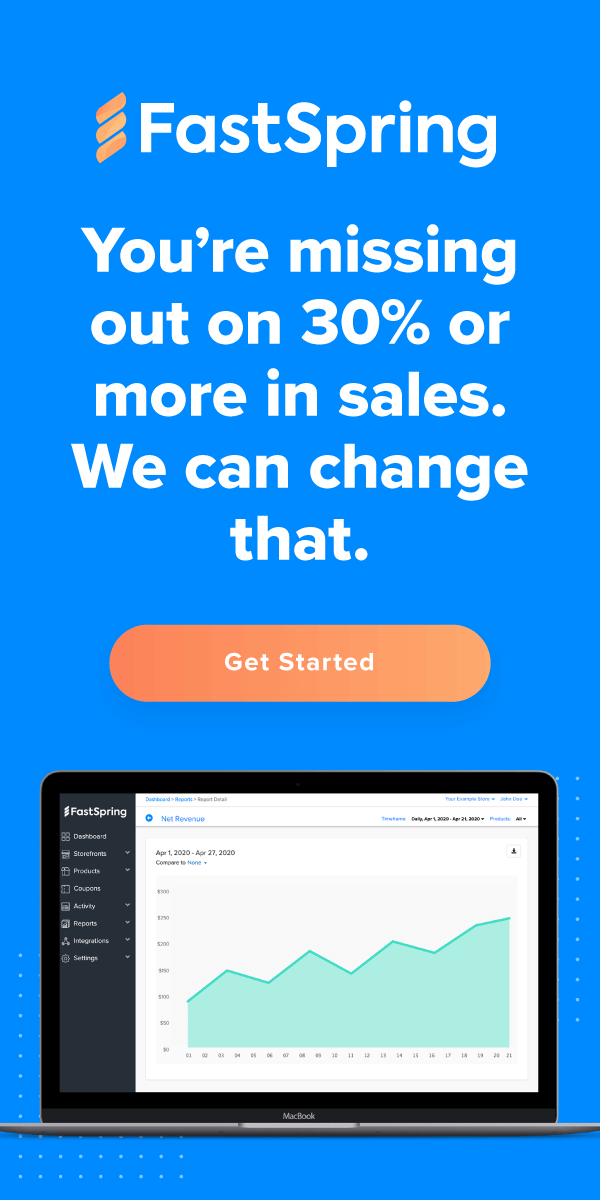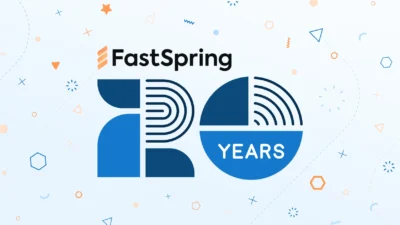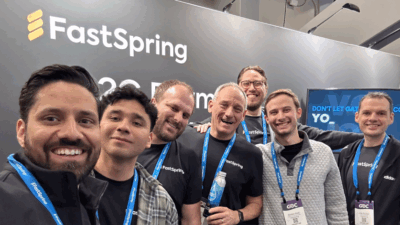There were so many great questions after Part 1 of our 2-part webinar More Money, More Control: Selling Your App Outside the App Store, host Christian Tietze didn’t have time to answer them all! Read on for his answers to some of the top questions.
I enjoyed the webinar last Wednesday, but I failed as a timekeeper! Sorry, folks! I would’ve liked to talk longer, like I do during my live seminars, but webinars don’t work like that. So, this time, we meet in text! Here are a few questions I totally wanted to talk about. I’ll try to cover everything else in future updates in my book and on my blog. If there’s something else that comes to mind after this, you can always contact me via my website christiantietze.de.
Why FastSpring?
Hey Christian, I was wondering what the primary reasons or results of your research were that led you to choose FastSpring over the other options in the market? —Mark
Social proof, mostly. Even before I had my first Mac, I bookmarked interesting Mac apps and checked out their stores. It seemed that nearly everyone was using FastSpring, so I checked them out first.
When I distributed my first Mac app a couple of years ago, I also checked out Paddle. Their convenient service SOUNDED great, but when I integrated their SDK into my code, I found I wanted full control, not just 90%.
Because FastSpring is such a flexible ecommerce provider (for example, I sell Mac apps and ebooks), now I’d probably check out DevMate instead of Paddle because they, too, take care of everything, but I’d use FastSpring to handle payments. This way you’d save some work coding, but keep the flexibility of a FastSpring account.
Becoming a Serious and Well-Known Developer
I’m wondering if you have any advice on promoting your apps outside the App Store. I’ve moved out of the Mac App Store (I agree with your analysis), however, I’m not getting any sales! Do you have any advice about how/where to promote? I’ve done Google/Bing ads and submitted to MacUpdate and Softpedia. —Dave
Dave’s situation would be about the same if he distributed on the Mac App Store. Uploading an app doesn’t guarantee downloads or sales. MacUpdate and Softpedia theoretically increase the visibility, just as the Mac App Store makes your app visible to customers. But, being visible doesn’t automatically mean that there will be somebody looking! That’s the job of marketing: to increase not only visibility, but also effective reach. People have to know that your app exists so they can start looking for it.
This issue is closely related to another question:
What do you think about the sense of security that users get from the App Store, and how can I make people feel “safe” when buying from my own website? (HTTPS, any specific icons that people tend to like…?) —Will
Here, too, the underlying issue is becoming well-known and respected.
You need to have a name so people become interested in your products. That means you need social proof. Social proof is the reason that reviews are so powerful, and why bloggers can be so influential on your success. Through social proof, you earn trust. No “trusted e-shop” badge can achieve that; they’ll indicate that your ecommerce software works, but badges don’t help people figure out whether or not you’re a fraud.
When you have social proof, you probably don’t have to worry about trust and your sales numbers anymore.
Have you tried/do you have an opinion on app stores as just a customer acquisition channel, i.e. just offer a free limited app (trial mode) that invites people to come to your website to register. Limitation is that you can’t have sell links in the app. —Matias
From the situation I just outlined, providing a free version on the warehouse that is the Mac App Store shouldn’t offer many benefits. Getting people to search for your app is the biggest hurdle. If they don’t search on Google after they find no hit on the Mac App Store, I’d say they’re not the kind of customers you want to deal with in the long run. Consequently, I’d bet against the effectiveness of reaching people exclusively through the App Store.
Then again, providing a demo on the Mac App Store in addition to offering a trial from your website can positively affect non-pro users. Think about Sandboxing restrictions and Gatekeeper: will it cause trouble to grant access privileges and make the app run?
Thus it comes down to a different question: Who’s your target audience? Are they tech-savvy and do they know how to change the system settings to make third-party apps like yours work?
If you aim for pro users, it won’t matter when you’re not available on the Mac App Store. Pro users know what to look for, how to find out if you’re legit, and if they want to enter their credit card details for your product.
Technical Ecommerce Questions
There were also some assorted technical questions; I’d like to address some of them here as well.
Can I use affiliates with these ecommerce vendors like FastSpring? —Adam
This is an important question, because having a network of strong affiliate partners can help your business a lot. I personally buy into the advice of Chris Guillebeau from The $100 Startup. Marketing, or reaching people, is the hardest part. If you have a partner who “generates sales” for you, this service is worth 51% of your revenue. The symbolic 1% on top of the half is a token of appreciation.
That being said, FastSpring’s affiliate network partner ImpactRadius takes 20% for their infrastructure service. That number is pretty on-point, especially when it’s compared to other providers. Here are some hard numbers to consider: you sell an app for $10. FastSpring takes a few percent— let’s say 10% to make the math easy. (After all, they make your business possible.) Then, another service takes 20% for the affiliate stuff. That’s twice the amount you’re giving to FastSpring to track revenue sources. So, you end up with $7 to spend. You wanted to give away 51%, or $5.10 to your partner. You’ll end up with $1.90. Huh?
Well, you need to keep in mind that ImpactRadius doesn’t ONLY track link sources. ImpactRadius provides the infrastructure to build your own affiliate network. This network’s worth isn’t measured in revenue per sale— it’s measured in exposure and attention. You pay to let other people do the marketing for you. This is extremely valuable.
If I need technical help setting up the interface, is there help available? —Adam
There sure is. FastSpring’s support is very responsive, and they can even set up a store design that matches your website if you like. Also, the first time is totally free!
If you need assistance, not with the ecommerce back end per se, but with making the Mac app and your store work together, I’ll be happy to help! Every road bump you discover helps me make the book better, so it’s a win-win. Just get in touch via email.
You mentioned CocoaFob for Mac applications. Can you recommend a similar solution for Mac applications? —Michael
The CocoaFob algorithm is not for Mac only. Check the repository for a variant in your programming language. If it doesn’t exist yet, it’s simple to convert to C#, F#, or whatever.
Wrapping Up & Shameless Self-Promotion
Thanks for all the questions, folks! I only picked some of the plethora of questions this time, but I’ll cover the rest elsewhere. Among other things, I’m already outlining next steps to make version two of my book even better. And, I plan to write more technical content on my own blog.
Speaking of the book, the ebook version from my store is still discounted 20% if you enter the coupon code MORECONTROL!
Now, go and rock on!
Check out a few related articles below:
- HOW TO SELL APPS OUTSIDE THE APPLE MAC STORE IN 3 STEPS
- 5 REASONS TO SELL YOUR APP OUTSIDE THE MAC APP STORE
- WHY YOU NEED AN ECOMMERCE PLATFORM TO BREAK FREE FROM THE APP STORE
![[Customer Story] Why TestDome Considers FastSpring a Real Partner](https://fastspring.com/wp-content/themes/fastspring-bamboo/images/promotional/2023/FastSpring-TestDome-blog-thumbnail.jpg)








